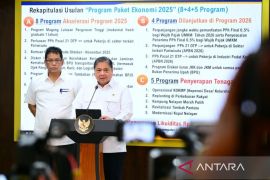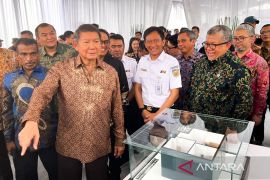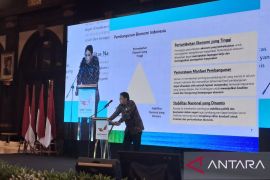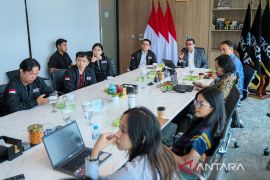The high growth would need to be followed up by a reduction in the country`s dependence on imported components so that the ensuing inflation trend could be curbed.Jakarta (ANTARA News) - Bank Indonesia (BI) is projecting economic growth in 2013 to reach over 7.0 percent on the back of ever rising investments and agricultural productivity, an official of the central bank said.
The optimistic projection on the Indonesian economy was conveyed by BI Monetary Policy Bureau S. Sugeng at a press conference to highlight BI`s Economic Report on Indonesia (ERI) 2010 here on Wednesday.
Sugeng said the high growth would need to be followed up by a reduction in the country`s dependence on imported components so that the ensuing inflation trend could be curbed.
"High growth usually is followed by high inflation due to the high ratio of imports. Thus, the supply side should be able to respond to the inflationary trends by improvement of infrastructure and rising productivity," Sugeng said.
Sugeng however added that as long as the balance of payment remaining surplus, then the economy would not overheat as import still is lower than export.
In 2011, the domestic economy is projected to expand in the range of 6.0 -6.5 percent and may even top up to 7.0 percent in the medium term.
Overall, BI predicts that inflation in 2011 will be 4-6 percent, 2012 and 2013 in the range of 3.5-5.5 percent, 2014 inflation is projected 3-5 percent and in 2015 inflation will continue to decrease to between 2.5-4.5 percent.
The central bank forecasts that export will grow between 7.9-8.4 percent in 2011, 8.1-8.6 percent in 2012, 8.2-9.1 percent in 2013, 8.3-9.3 percent in 2014 and 8.6-9.6 percent in 2015.
Import in 2011 is projected to grow at the range of 9.2-9.7 percent, 9.8-10.3 percent in 2012, 9.5-10.4 percent in 2013, 10.7-11.7 percent in 2014 and 9.8-10.8 percent in 2015.
Sugeng added that for this year, capital inflows will remain strong with those entering the portfolio instrument amounting to 15.2 billion US dollars, a sizable rise compared to the 9.7 billion US dollars in 2010.
"Our projection is that capital inflow will be of upward trend. It would not only those enter the portfolio but to the direct investment as well to become 9.8 billion US dollars from the 2.6 billion US dollars last year," Sugeng said.(*)
Editor: Heru Purwanto
Copyright © ANTARA 2011










